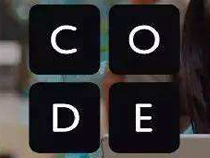详解如何使用beego orm在postgres中存储图片
Postgres如何存储文件
postgres提供了两种不同的方式存储二进制,要么是使用bytea类型直接存储二进制,要么就是使用postgres的LargeObject功能;决定使用哪中方式更加适合你,就需要了解这两种存储方式有哪些限制
bytea类型
bytea类型在单列中虽然可以支持1GB的容量,但是还是不建议使用bytea去储存比较大的对象,因为它会占用大量的内存
下面通过一个例子来说明,假如现在要在一个表中存储图片名和该图片的数据,创建表如下:
CREATE TABLE images (imgname text, img bytea);
在表中插入一张图片:
File file = new File("myimage.gif");
FileInputStream fis = new FileInputStream(file);
PreparedStatement ps = conn.prepareStatement("INSERT INTO images VALUES (?, ?)");
ps.setString(1, file.getName());
ps.setBinaryStream(2, fis, file.length());
ps.executeUpdate();
ps.close();
fis.close();
上面的setBinaryStream就会将图片内容设置到img字段上面,也可以使用setBytes()直接设置图片的内容
接下来,从表中取出图片,代码如下:
PreparedStatement ps = con.prepareStatement("SELECT img FROM images WHERE imgname = ?");
ps.setString(1, "myimage.gif");
ResultSet rs = ps.executeQuery();
if (rs != null) {
while (rs.next()) {
byte[] imgBytes = rs.getBytes(1);
// use the data in some way here
}
rs.close();
}
ps.close();
Large Object
Large Object就可以存储大文件,存储的方式是在单独的一张表中存储大文件,然后通过oid在当前表中进行引用;下面通过一个例子来解释:
CREATE TABLE imageslo (imgname text, imgoid oid);
首先是创建一张表,该表中第二个字段类型为oid,之后就是通过该字段引用大文件对象;下面我们在表中插入一张图片:
// All LargeObject API calls must be within a transaction block
conn.setAutoCommit(false);
// Get the Large Object Manager to perform operations with
LargeObjectManager lobj = ((org.postgresql.PGConnection)conn).getLargeObjectAPI();
// Create a new large object
int oid = lobj.create(LargeObjectManager.READ | LargeObjectManager.WRITE);
// Open the large object for writing
LargeObject obj = lobj.open(oid, LargeObjectManager.WRITE);
// Now open the file
File file = new File("myimage.gif");
FileInputStream fis = new FileInputStream(file);
// Copy the data from the file to the large object
byte buf[] = new byte[2048];
int s, tl = 0;
while ((s = fis.read(buf, 0, 2048)) > 0) {
obj.write(buf, 0, s);
tl += s;
}
// Close the large object
obj.close();
// Now insert the row into imageslo
PreparedStatement ps = conn.prepareStatement("INSERT INTO imageslo VALUES (?, ?)");
ps.setString(1, file.getName());
ps.setInt(2, oid);
ps.executeUpdate();
ps.close();
fis.close();
在代码中需要使用lobp.open打开一个大文件,然后将图片的内容写入这个对象当中;下面从大文件对象中读取这个图片:
// All LargeObject API calls must be within a transaction block
conn.setAutoCommit(false);
// Get the Large Object Manager to perform operations with
LargeObjectManager lobj = ((org.postgresql.PGConnection)conn).getLargeObjectAPI();
PreparedStatement ps = con.prepareStatement("SELECT imgoid FROM imageslo WHERE imgname = ?");
ps.setString(1, "myimage.gif");
ResultSet rs = ps.executeQuery();
if (rs != null) {
while (rs.next()) {
// Open the large object for reading
int oid = rs.getInt(1);
LargeObject obj = lobj.open(oid, LargeObjectManager.READ);
// Read the data
byte buf[] = new byte[obj.size()];
obj.read(buf, 0, obj.size());
// Do something with the data read here
// Close the object
obj.close();
}
rs.close();
}
ps.close();
需要注意的是,对于Large Object的操作都需要放在一个事务(Transaction)当中;如果要删除大文件所在行,在删除这行之后,还需要再执行删除大文件的操作
注:使用Large Object会有安全问题,连接到数据库的用户,即便没有包含大对象所在列的权限,也可以操作这个大对象
Beego orm如何存储图片
看完上面的postgres对于图片的存储,再来看下如何使用beego orm存储一张图片;在beego orm中支持了go的所有基础类型,但是不支持slice;所以,不能直接将[]byte映射到bytea字段上面
好在beego orm提供了一个Fielder接口,可以自定义类型,接口定义如下:
// Fielder define field info
type Fielder interface {
String() string
FieldType() int
SetRaw(interface{}) error
RawValue() interface{}
}
所以,现在就需要定义一个字节数组的类型,然后实现这些接口就好了,代码如下:
type ByteArrayField []byte
// set value
func (e *ByteArrayField) SetRaw(value interface{}) error {
if value == nil {
return nil
}
switch d := value.(type) {
case []byte:
*e = d
case string:
*e = []byte(d)
default:
return fmt.Errorf("[ByteArrayField] unsupported type")
}
return nil
}
func (e *ByteArrayField) RawValue() interface{} {
return *e
}
// specified type
func (f *ByteArrayField) FieldType() int {
return orm.TypeTextField
}
func (f *ByteArrayField) String() string {
return string(*f)
}
然后,我们就可以在struct中进行映射了,如下:
type ImageModel struct{
ImageName string `orm:"column(image_name)"`
ImageData ByteArrayField `orm:"column(image_data);type(bytea)"`
}
这样就可以使用orm的接口操作imageModel,向数据库插入图片,或者从数据库读出图片的内容了
以上就是详解如何使用beego orm在postgres中存储图片的详细内容,更多关于beego orm postgres存储图片的资料请关注脚本之家其它相关文章!
相关文章

Go基于GORM 获取当前请求所执行的 SQL 信息(思路详解)
这篇文章主要介绍了Go基于GORM 获取当前请求所执行的 SQL 信息(思路详解),本文给大家介绍的非常详细,对大家的学习或工作具有一定的参考借鉴价值,需要的朋友可以参考下2021-01-01
Go语言atomic.Value如何不加锁保证数据线程安全?
这篇文章主要介绍了Go语言atomic.Value如何不加锁保证数据线程安全详解,有需要的朋友可以借鉴参考下,希望能够有所帮助,祝大家多多进步,早日升职加薪2023-05-05












最新评论